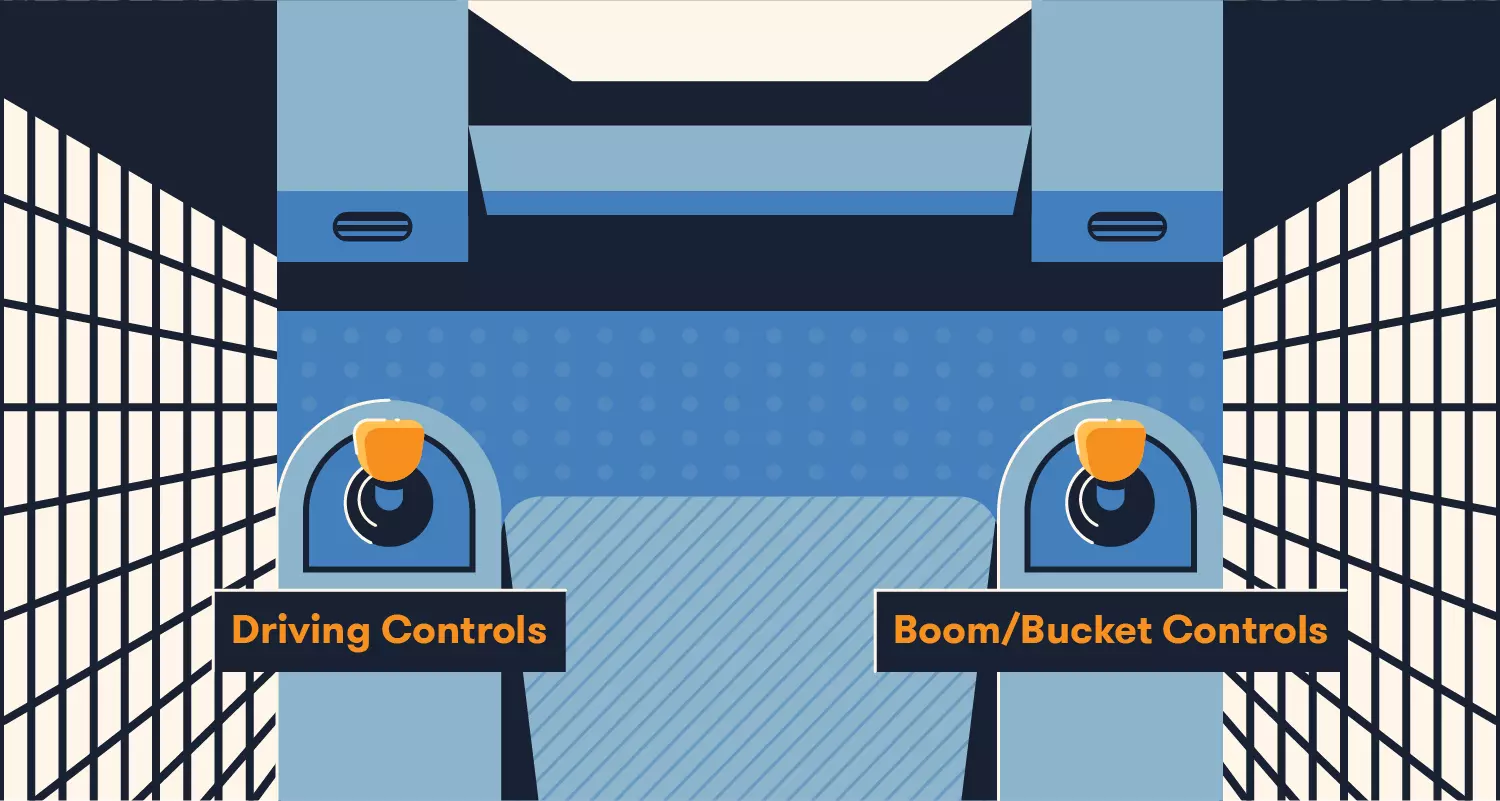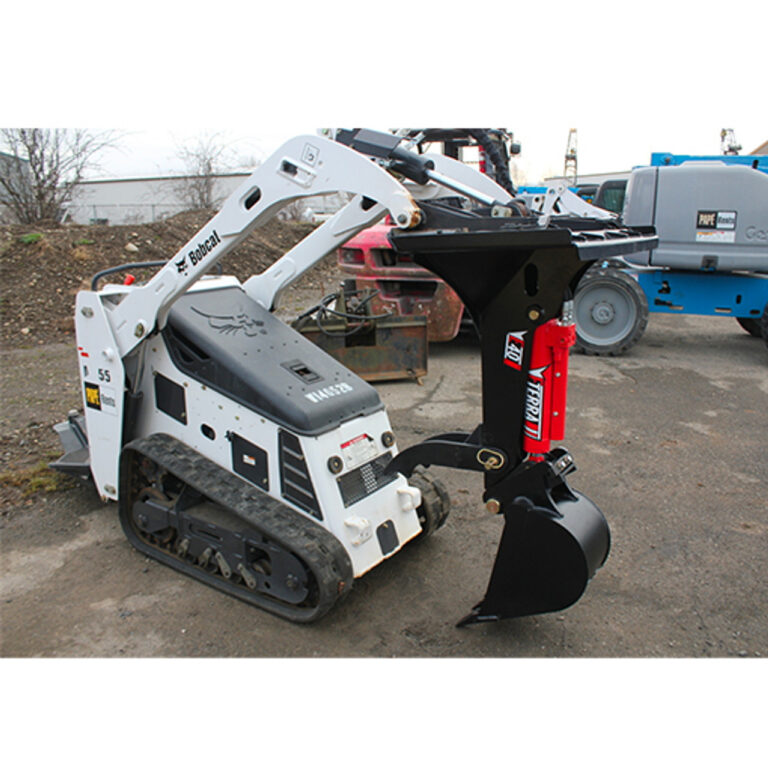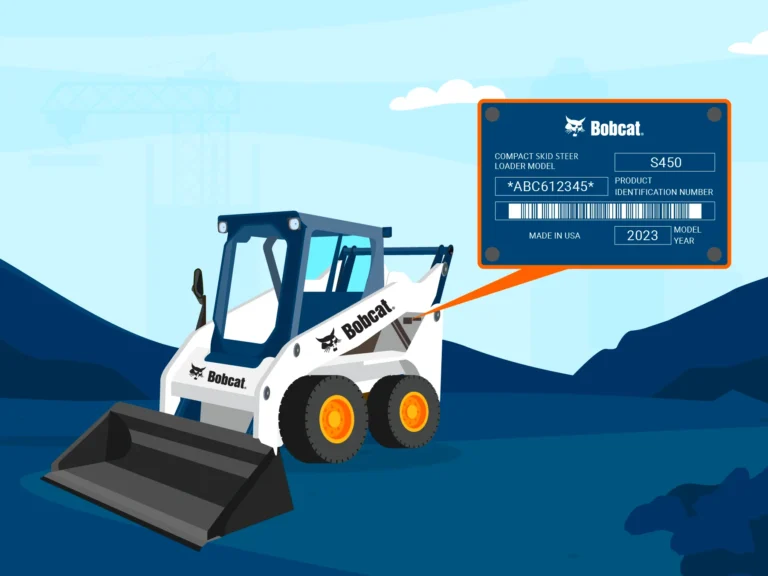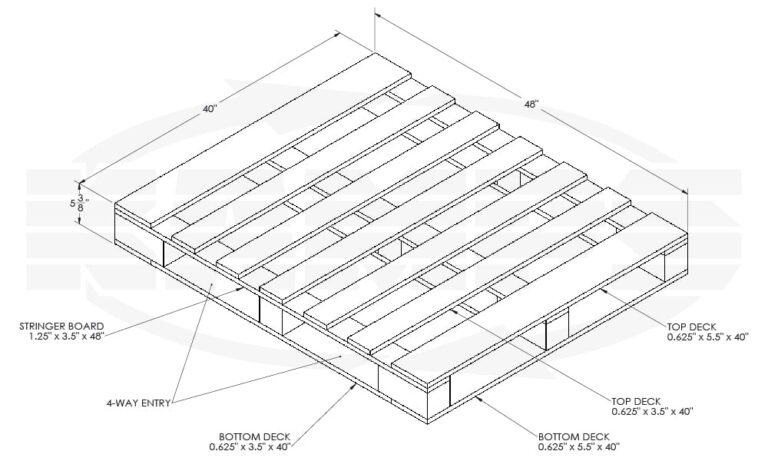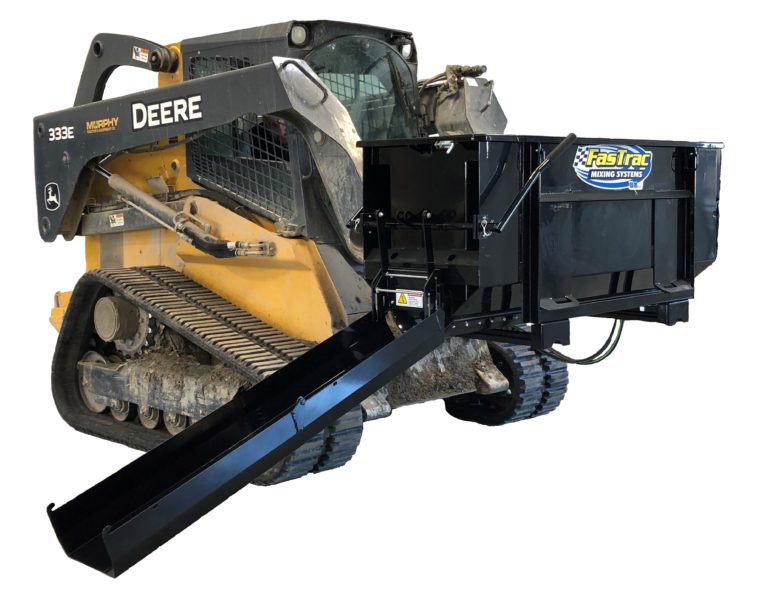How to Use Skid Steer? Master the Basics in Minutes
To use a skid steer, start by familiarizing yourself with the controls. Next, practice maneuvering the machine in a safe area.
Skid steers are versatile machines ideal for various tasks, from landscaping to construction. They excel in tight spaces where larger equipment cannot operate. Understanding how to use a skid steer effectively enhances productivity and safety. Operators should become comfortable with the joystick controls, which manage movement and attachments.
Safety gear is essential, and a pre-operation inspection is crucial to ensure everything functions correctly. Whether moving dirt, digging trenches, or lifting heavy materials, mastering the skid steer can significantly streamline your project. Proper training and practice are key to harnessing the full potential of this powerful equipment.
Introduction To Skid Steer Operation
Understanding skid steer operation is essential for effective use. These machines are compact, powerful, and versatile. Learning how to operate them enhances productivity on the job site.
Compact Powerhouses In Construction
Skid steers are compact yet powerful machines. They excel in tight spaces where larger equipment cannot fit.
- Ideal for landscaping
- Perfect for construction sites
- Useful in agriculture
Skid steers come in various sizes. Choose one based on your needs. Here are some key features:
| Feature | Description |
|---|---|
| Engine Power | Typically ranges from 20 to 100 HP |
| Weight Capacity | Can lift up to 3,000 lbs |
| Attachments | Forks, buckets, and more |
Versatility On The Job Site
Skid steers are known for their versatility. They can handle various tasks with the right attachments.
- Excavation
- Material handling
- Site cleanup
- Demolition
Different attachments increase their functionality:
- Buckets for digging and lifting
- Forks for moving pallets
- Augers for drilling holes
Operating a skid steer can save time and labor costs. Understanding its capabilities is crucial for success.
Pre-operation Checklist
Before using a skid steer, a thorough pre-operation checklist is crucial. This ensures safety and optimal performance during operation. Each step helps prevent accidents and equipment damage.
Inspecting The Machine
Start with a detailed inspection of the skid steer. Follow these steps:
- Check Fluid Levels: Inspect engine oil, coolant, and hydraulic fluid.
- Examine Tires: Look for proper inflation and tread wear.
- Inspect Attachments: Ensure all attachments are secure and functional.
- Test Lights: Confirm all headlights and taillights work.
- Look for Leaks: Check for any signs of fluid leaks.
- Assess Safety Features: Test the horn, seatbelt, and backup alarm.
Use this table for a quick reference:
| Inspection Item | What to Check |
|---|---|
| Fluid Levels | Engine oil, coolant, hydraulic fluid |
| Tires | Inflation and tread condition |
| Attachments | Security and functionality |
| Lights | Headlights and taillights |
| Leaks | Signs of fluid leaks |
| Safety Features | Horn, seatbelt, backup alarm |
Safety Gear Essentials
Wearing the right safety gear is vital. Always use the following:
- Hard Hat: Protects against falling objects.
- Safety Goggles: Shields eyes from dust and debris.
- Steel-Toed Boots: Protects feet from heavy equipment.
- High-Visibility Vest: Ensures visibility on job sites.
- Gloves: Provides grip and protects hands.
Remember, safety gear can save lives. Always wear it before operating the skid steer.
Entering And Exiting The Skid Steer
Entering and exiting a skid steer requires care and attention. Proper techniques ensure safety and prevent accidents. Follow these tips for a smooth process.
Proper Techniques For Safety
- Always check surroundings before entering.
- Face the machine while getting in or out.
- Use the handrails for support.
- Keep three points of contact: two hands and one foot.
- Wear appropriate footwear with good grip.
Before entering, ensure the skid steer is off. This minimizes risks of accidental movement.
Step into the machine carefully. Avoid jumping or rushing. Take your time to maintain balance.
Common Mistakes To Avoid
| Mistake | Consequence |
|---|---|
| Not checking surroundings | Increased risk of injury |
| Rushing to enter or exit | Higher chance of falling |
| Ignoring handrails | Loss of balance |
| Wearing improper footwear | Slipping during entry or exit |
Stay aware of your environment. Never overlook safety measures. Avoid these mistakes to ensure a safe experience.
Understanding The Controls
Operating a skid steer requires knowledge of its controls. Proper control understanding ensures safety and efficiency. Mastering these controls can make your work easier.
Familiarizing With The Dashboard
The dashboard of a skid steer provides important information. Here are key components to recognize:
| Component | Function |
|---|---|
| Speedometer | Shows current speed of the machine. |
| Fuel Gauge | Indicates fuel level. |
| Temperature Gauge | Monitors engine temperature. |
| Warning Lights | Alerts for maintenance issues. |
Always check the dashboard before starting your skid steer. This ensures everything is functioning properly.
Joystick And Pedal Functions
The joystick and pedals control movement and operations. Understanding their functions is crucial.
- Joystick: Controls the direction and speed of the skid steer.
- Left Joystick: Moves the machine forward and backward.
- Right Joystick: Steers left and right.
Pedals control additional functions:
- Left Pedal: Operates the lift arms.
- Right Pedal: Engages the bucket or attachment.
Practice using the joystick and pedals. This builds confidence and improves your skills.
Starting The Engine
Starting a skid steer requires careful attention. Proper steps ensure safety and efficiency. Follow the guidelines below to start your skid steer effectively.
The Ignition Process
Starting the engine is simple. Follow these steps:
- Check the area for safety hazards.
- Ensure the machine is in neutral.
- Fasten your seatbelt before starting.
- Turn the key to the ‘on’ position.
- Press the ignition button or turn the key to start.
If the engine does not start, check:
- Battery connections.
- Fuel levels.
- Electrical fuses.
Warm-up Procedures
After starting, allow the engine to warm up. This helps maintain engine health. Follow these warm-up steps:
- Let the engine idle for 5 minutes.
- Observe the gauges for normal readings.
- Engage the hydraulics gently.
Warm-up is essential for:
| Benefit | Description |
|---|---|
| Engine Longevity | Reduces wear and tear on engine components. |
| Hydraulic Efficiency | Ensures proper fluid temperature for peak performance. |
| Safety | Prepares the machine for smooth operation. |
Follow these steps to ensure a smooth start and safe operation.
Basic Maneuvers
Mastering the basic maneuvers of a skid steer is essential. These skills help you operate safely and efficiently. Understanding forward and reverse motions, along with turning and pivoting techniques, is crucial.
Forward And Reverse Motions
Moving forward and backward is the first step in skid steer operation. Follow these simple steps:
- Ensure the seatbelt is fastened.
- Check the surroundings for obstacles.
- Use the joystick to control movement:
- Push the joystick forward to move forward.
- Pull the joystick back to reverse.
Practice these motions in a safe area:
| Motion | Joystick Position |
|---|---|
| Forward | Push joystick forward |
| Reverse | Pull joystick back |
Start with slow speeds. Increase speed as you gain confidence.
Turning And Pivoting Techniques
Turning and pivoting are vital for navigating tight spaces. Here’s how to do it:
- For right turns:
- Push the right joystick to the right.
- Keep the left joystick in a neutral position.
- For left turns:
- Push the left joystick to the left.
- Keep the right joystick in a neutral position.
To pivot, follow these steps:
- Push one joystick forward and the other back.
- This creates a pivot point in the center.
Practice turning and pivoting in open areas first. Gradually try tighter spaces.
Operating Attachments
Operating attachments on a skid steer is essential for maximizing its versatility. Attachments enhance productivity and efficiency for various tasks. Understanding different types and how to connect them is crucial.
Attachment Types And Uses
Skid steers can use various attachments. Each has specific tasks. Here are some common attachment types:
| Attachment Type | Primary Use |
|---|---|
| Bucket | Moving dirt, gravel, and materials |
| Forks | Lifting and moving pallets |
| Auger | Boring holes for posts or trees |
| Grader Blade | Leveling and grading surfaces |
| Snow Plow | Clearing snow from driveways and roads |
Each attachment serves a specific purpose. Choose wisely based on your project needs.
Connecting And Detaching Tips
Properly connecting and detaching attachments ensures safety. Follow these steps:
- Park on a level surface.
- Lower the attachment to the ground.
- Align the attachment with the skid steer.
- Use the hydraulic control to connect.
- Check for secure attachment before use.
To detach:
- Lift the attachment slightly.
- Use the hydraulic system to release.
- Carefully pull the skid steer away.
Always follow manufacturer guidelines. Proper technique prevents accidents.
Maintenance And Troubleshooting
Proper maintenance keeps your skid steer running smoothly. Regular checks prevent costly repairs. Quick troubleshooting helps fix issues fast. This section covers essential maintenance and common problems.
Routine Maintenance Schedule
Follow this simple routine maintenance schedule:
| Task | Frequency |
|---|---|
| Check engine oil | Every 50 hours |
| Replace engine oil | Every 250 hours |
| Inspect air filter | Every 100 hours |
| Clean or replace air filter | Every 200 hours |
| Check hydraulic fluid | Every 50 hours |
| Inspect tires | Every 100 hours |
| Check battery terminals | Monthly |
Stay on schedule. It ensures your skid steer operates at its best.
Common Issues And Solutions
Here are common issues and easy solutions:
-
Engine won’t start:
- Check battery charge.
- Inspect the starter motor.
-
Hydraulic system failure:
- Check hydraulic fluid level.
- Inspect hoses for leaks.
-
Unusual noises:
- Inspect for loose parts.
- Check for worn bearings.
-
Overheating:
- Check coolant levels.
- Inspect radiator for blockages.
Address these issues quickly. It prevents bigger problems later.
Safety Protocols During Operation
Operating a skid steer requires strict safety protocols. Following these guidelines ensures your safety and the safety of others. Always stay alert and aware of your surroundings.
Navigating Around People And Obstacles
Skid steers are powerful machines. They can be dangerous if not handled properly. Here are some key points to remember:
- Keep a safe distance from people and obstacles.
- Always use horns or signals to alert others.
- Check your blind spots before moving.
- Communicate clearly with ground personnel.
Before starting, ensure the area is clear. Look out for:
| Potential Hazards | Action |
|---|---|
| People | Stop and wait until the area is clear. |
| Uneven ground | Drive slowly and carefully. |
| Power lines | Avoid contact and maintain distance. |
Emergency Procedures
Be prepared for emergencies. Knowing what to do can save lives. Follow these steps:
- Stop the machine immediately.
- Assess the situation quickly.
- Notify your supervisor or safety officer.
- If someone is injured, call for help.
Keep a first aid kit on site. Ensure everyone knows its location. Regular training on emergency procedures is vital.
Practice makes perfect. Conduct drills to prepare for emergencies. This builds confidence and improves response time.
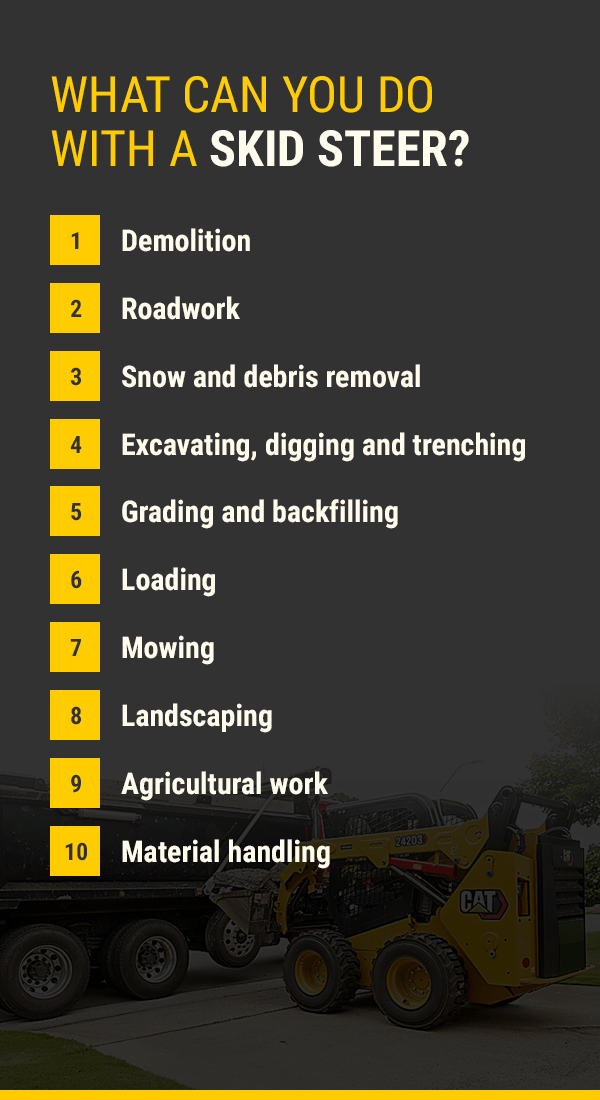
Credit: www.hopenn.com
Advanced Operating Techniques
Mastering advanced operating techniques enhances your skid steer skills. These techniques boost precision and efficiency. They help you tackle challenging tasks with ease.
Precision Handling
Precision handling is essential for effective skid steer operation. Here are key tips:
- Slow and Steady: Move slowly to maintain control.
- Use the Joysticks: Practice joystick movements for smoother operation.
- Watch Your Surroundings: Stay alert to avoid obstacles.
- Adjust Speed: Change speed based on the task.
Try these techniques:
- Practice on flat surfaces before tackling slopes.
- Use the bucket to gauge distance and height.
- Make small adjustments for better accuracy.
Keep practicing to enhance your precision handling. This will make your work more efficient.
Efficiency Tips
Maximize your skid steer’s efficiency with these tips:
| Tip | Description |
|---|---|
| Plan Your Route | Choose the shortest path to save time. |
| Maintain Your Machine | Regular maintenance ensures optimal performance. |
| Load Management | Distribute weight evenly for better stability. |
| Use Attachments Wisely | Choose the right attachment for each task. |
Implement these efficiency tips to improve productivity. Each small change can lead to significant gains.
Concluding Thoughts
Using a skid steer effectively requires practice and commitment. Mastery comes from hands-on experience. Understanding the machine’s controls is essential. Each operator develops their own technique over time.
Practice Leads To Proficiency
Regular practice is vital for becoming a skilled operator. Here are some tips:
- Start in an open area.
- Familiarize yourself with the controls.
- Practice basic movements like forward, backward, and turning.
- Gradually move to more complex tasks.
Set specific goals for each practice session. Monitor your progress. Challenge yourself with new tasks. This approach helps build confidence.
Continued Learning And Certification
Investing in ongoing education enhances your skills. Consider these options:
- Attend workshops or training sessions.
- Participate in online courses.
- Obtain a certification for skid steer operation.
Certification proves your competence. It may open new job opportunities. Stay updated on safety regulations. Follow industry trends to remain proficient.
| Learning Option | Benefits |
|---|---|
| Workshops | Hands-on experience and expert guidance. |
| Online Courses | Flexible learning at your own pace. |
| Certification | Increased job prospects and credibility. |
Stay committed to improving your skills. Embrace new challenges. This dedication leads to greater proficiency with skid steers.
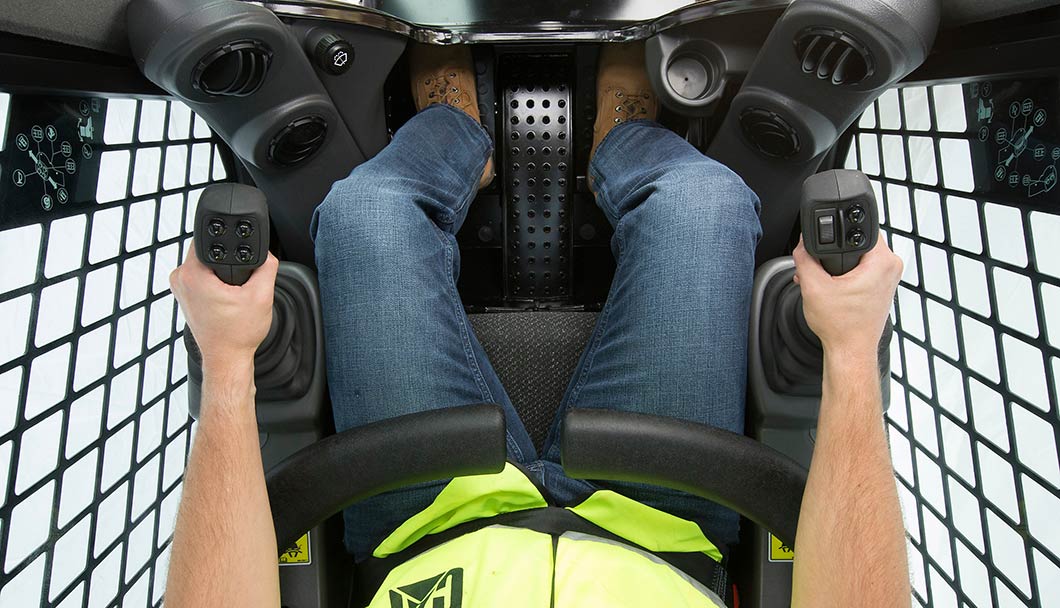
Credit: www.mylittlesalesman.com

Credit: www.youtube.com
Frequently Asked Questions
How Do I Start A Skid Steer?
To start a skid steer, ensure the machine is in neutral. Insert the key and turn it to the “start” position. Once started, check the gauges for proper readings. Familiarize yourself with the controls before operating. Always wear safety gear and follow manufacturer guidelines.
What Attachments Can I Use With A Skid Steer?
Skid steers are versatile and support various attachments. Common options include buckets, forks, and snowplows. Other attachments include augers, grapples, and landscape rakes. Choose attachments based on your project needs. Ensure compatibility with your skid steer model for optimal performance.
What Safety Precautions Should I Take?
Always wear a seatbelt while operating a skid steer. Before starting, inspect the machine for any issues. Be aware of your surroundings to avoid accidents. Keep bystanders at a safe distance while working. Follow all safety guidelines provided by the manufacturer.
How Do I Operate A Skid Steer?
Operating a skid steer involves understanding the controls. Use the joysticks to steer and control speed. Practice smooth movements to avoid jerky motions. Familiarize yourself with the machine’s capabilities. Start with simple tasks before tackling more complex jobs to build your confidence.
Conclusion
Mastering skid steer operation opens up a world of possibilities for your projects. With practice and attention to safety, you can boost your efficiency. Remember to familiarize yourself with the machine’s controls and features. Embrace the versatility of skid steers, and transform how you approach your worksite tasks.
Start your journey today!

